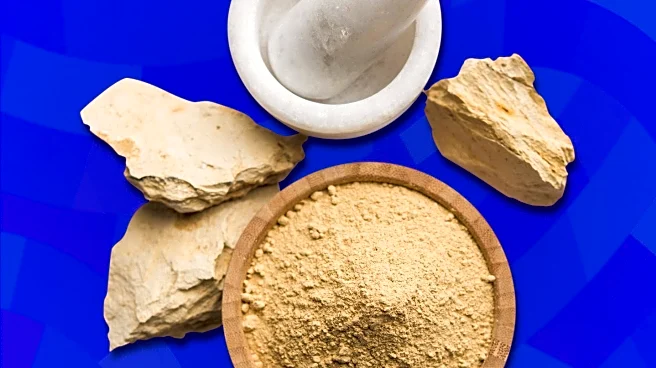What's Happening?
A recent study published in Nature by Mastrangelo et al. has identified imidazole propionate (ImP), a metabolite derived from gut microbiota, as a significant driver and potential therapeutic target in atherosclerosis.
This discovery could pave the way for new diagnostic and treatment strategies for cardiovascular disease, which remains the leading cause of mortality worldwide. ImP is produced by intestinal bacteria through the metabolism of histidine, an essential amino acid. While previously linked to metabolic disorders such as type 2 diabetes, its role in cardiovascular disease was unclear until now. The study demonstrated that ImP promotes atherosclerosis through activation of the imidazoline-1 receptor (I1R) on immune cells, challenging traditional lipid-centric paradigms. The research involved both mouse models and human cohorts, revealing that ImP levels were significantly higher in individuals with subclinical atherosclerosis, providing diagnostic value beyond traditional markers like LDL cholesterol.
Why It's Important?
The identification of ImP as a biomarker and driver of atherosclerosis highlights the potential for precision medicine in cardiovascular care. Current detection methods rely on expensive imaging techniques, whereas a simple blood test for ImP could allow for earlier identification of at-risk individuals. This metabolite represents the first immune-metabolism-mediated biomarker that operates independently of traditional lipid pathways, offering new mechanistic approaches for treatment. The study suggests that dietary or microbiome-targeted strategies could modulate ImP production, potentially reducing cardiovascular risk. This could lead to more personalized and effective interventions, benefiting patients who do not respond to conventional treatments.
What's Next?
Future research is needed to confirm the direct binding of ImP to the I1R receptor and to evaluate the selectivity of potential therapeutic agents like AGN192403. Clinical trials will be essential to assess the efficacy and safety of I1R antagonists as therapeutic agents. Additionally, standardized assays for measuring ImP levels must be developed and validated across diverse populations. Interventional studies exploring dietary modifications or microbiome manipulation could provide additional therapeutic options. The translation of these findings into clinical practice will require comprehensive safety profiling and validation of ImP as a biomarker in larger, more diverse populations.
Beyond the Headlines
The discovery of ImP adds to the growing list of gut microbiome-derived metabolites implicated in cardiovascular disease, expanding our understanding of the gut-aorta axis in disease pathogenesis. Unlike other metabolites like TMAO, which act through cholesterol pathways, ImP primarily influences immune activation and inflammatory signaling. This could lead to broader anti-inflammatory benefits and new therapeutic strategies that complement existing treatments like statins. However, challenges remain in standardizing protocols and addressing potential confounding factors such as dietary influences on ImP levels.











